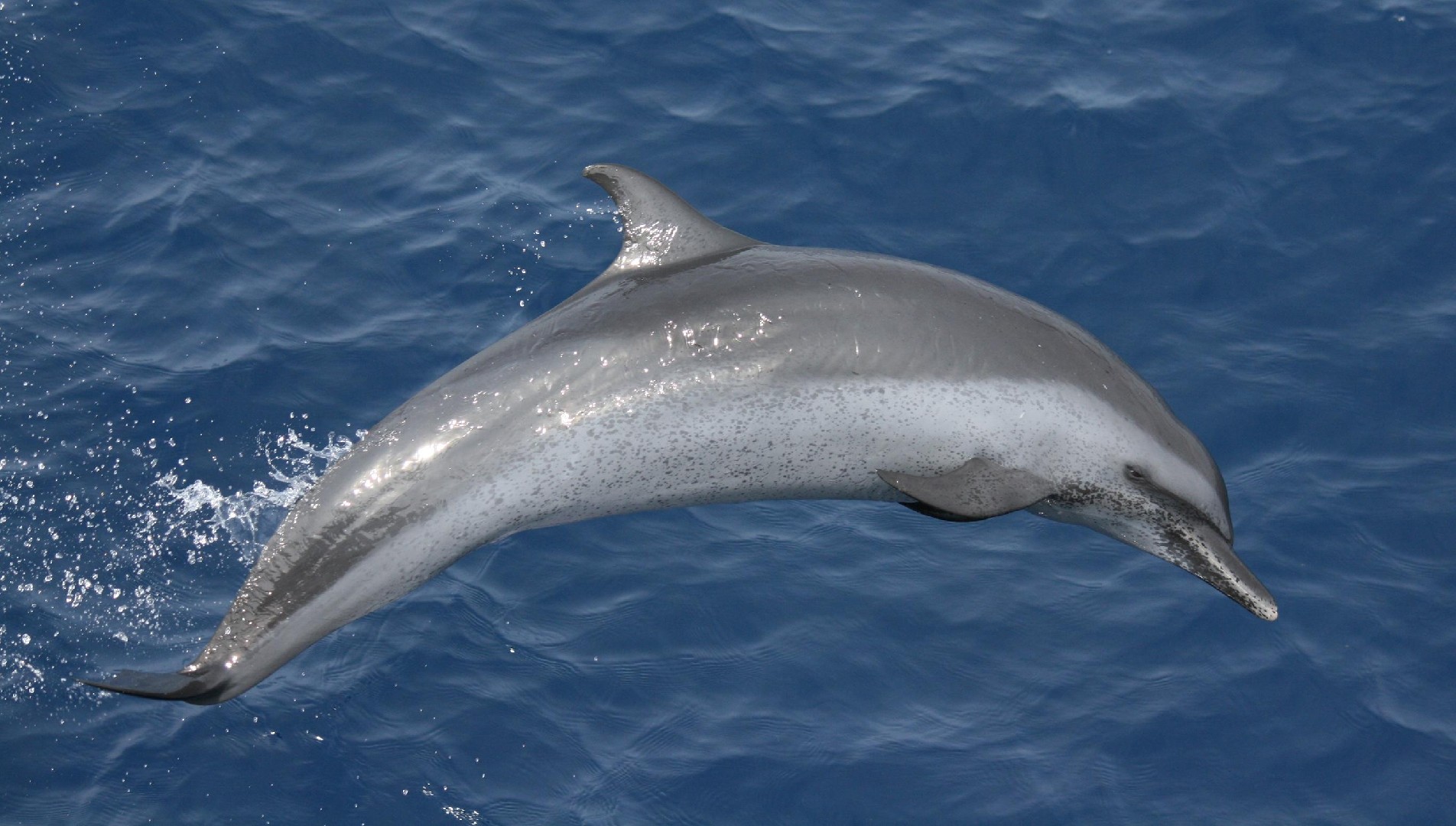Pantropical spotted dolphin
A species of Spotted dolphins, Also known as Bridled dolphin, Eastern pacific coastal spotted porpoise Scientific name : Stenella attenuata Genus : Spotted dolphins
Pantropical spotted dolphin, A species of Spotted dolphins
Also known as:
Bridled dolphin, Eastern pacific coastal spotted porpoise
Scientific name: Stenella attenuata
Genus: Spotted dolphins
Content
Description General Info
 Photo By Joseph Ferris III , used under CC-BY-2.0 /Cropped and compressed from original
Photo By Joseph Ferris III , used under CC-BY-2.0 /Cropped and compressed from original Description
The pantropical spotted dolphin varies significantly in size and coloration throughout its range. The most significant division is between coastal and pelagic varieties. The coastal form is larger and more spotted. (These two forms have been divided into subspecies only in eastern Pacific populations). Spots are key defining characteristics in adults, though immature individuals are generally uniformly colored and susceptible to confusion with the bottlenose dolphin. Populations around the Gulf of Mexico may be relatively spot-free even in adulthood. In the Atlantic, confusion is possible with the Atlantic spotted dolphin. Broadly speaking, the dolphin has a long, thin beak. The upper and lower jaws are darkly colored, but are separated by thin, white "lips". The chin, throat, and belly are white to pale grey with a limited number of spots. The flanks are separated into three distinct bands of color — the lightest at the bottom, followed by a thin, grey strip in the middle of the flank, and a dark-grey back. The tall concave dorsal fin is similarly colored. The thick tail stock matches the color of the middle band. The pantropical spotted dolphin is very active and is prone to making large, splashy leaps from the sea. It is a common breacher and will often clear the water for a second or more. Bow-riding and other play with boats is common. In the eastern Pacific, the dolphin is often found swimming with yellowfin tuna (hence the problem with dolphin deaths caused by tuna fishing). However, they do not feed on that fish. In fact, the two species have similar diets of small epipelagic fish. In other areas, the species may also feed on squid and crustaceans. Birth length is 80–90 cm. Adults are about 2.5 m long and weigh 120 kg. Sexual maturity is reached at 10 years in females and 12 years in males. The average lifespan is around 40 years. 
General Info
Lifespan
17-22 years
Diet
Pantropical spotted dolphin is predominantly piscivorous, indulging in a diet rich in small schooling fish. This species further complements its dietary palette with cephalopods, predominantly squids, ensuring a balanced marine diet.
Appearance
Pantropical spotted dolphin is a sleek, medium-sized dolphin, with a robust body and a long, thin beak. Its skin is smooth and glossy, predominantly gray on the top and lighter gray or white underneath. Some have distinct light spots or streaks on their sides. Adult males tend to be slightly larger and have more pronounced dorsal fins compared to females, and there's no significant variation in appearance for different subspecies.
Behavior
Pantropical spotted dolphin are social and agile animals, known for their friendly nature and sophisticated echolocation capabilities. They often travel in large schools, using cooperative techniques for hunting. Notably, pantropical spotted dolphin are superb acrobats, frequently breaching and slapping the water surface with their tails or flippers, possibly for communication or delousing.
Scientific Classification
Phylum
Chordates Class
Mammals Order
Whales and dolphins Family
Oceanic dolphins Genus
Spotted dolphins Species
Pantropical spotted dolphin